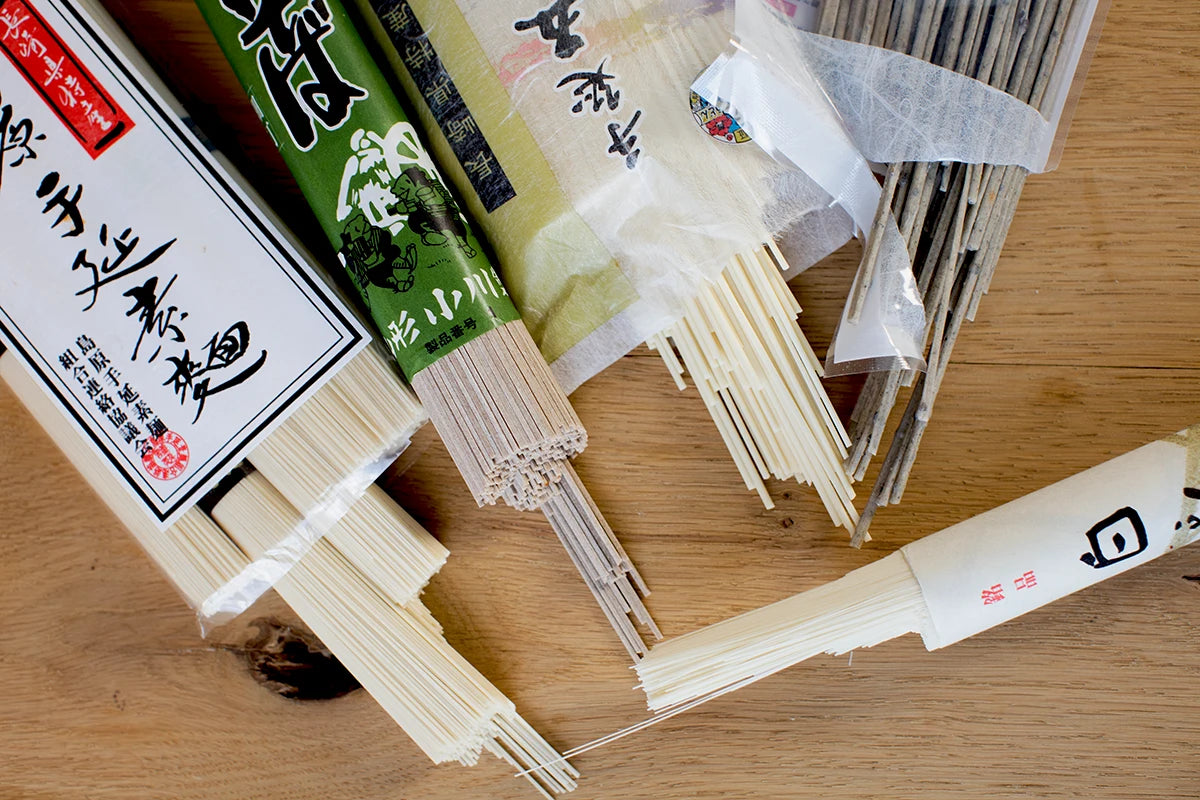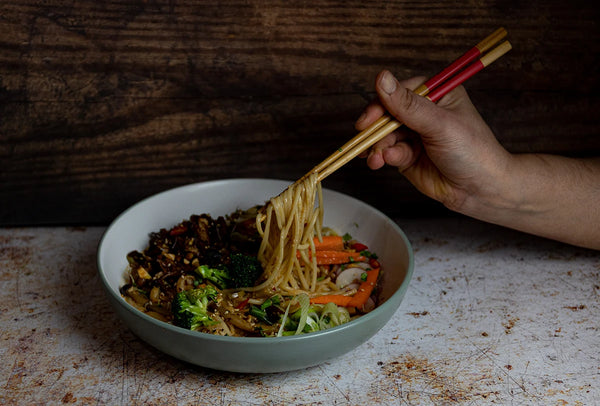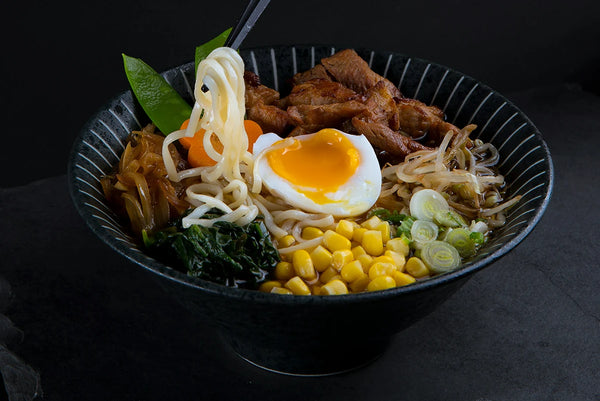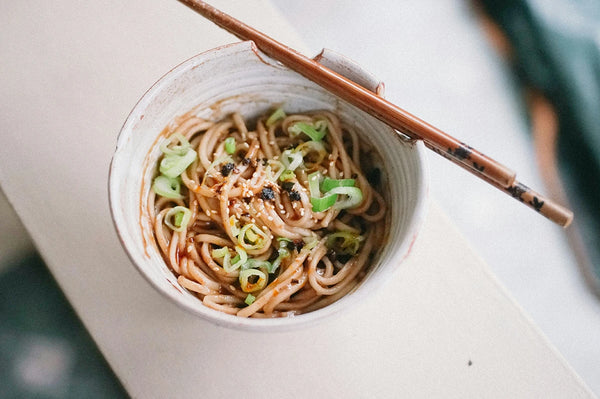
Level up your Japanese food with our variety of imported Japanese noodles. Whether you’re making a hot bowl of udon or cold summer soba, high-quality noodles are essential for perfecting authentic recipes.
As well as plain noodles, we offer new exciting flavours at The Wasabi Company such as matcha and sesame.
All our Japanese noodles are easy to boil at home, and you can enjoy them in a variety of dishes. We love pairing them with simple ingredients such as dashi-based broths or tsuyu dipping sauce to highlight their quality.

So, what's the difference between udon noodles, ramen noodles, soba noodles and somen? And how can you use them in the best way in your authentic Japanese cooking?
Read on to find out more.
Ramen noodles
Ramen noodles are probably the most recognisable type of Japanese noodle. They have a distinctive elasticity and chewy texture, and can come in various shapes and lengths. However, ramen noodles tend to be thinner and more yellow due to their kansui or egg content.
Most ramen noodles are made from four basic ingredients: wheat flour, salt, water, and kansui. This is a type of alkaline mineral water containing sodium carbonate and usually potassium carbonate, as well as sometimes a small amount of phosphoric acid.
The kansui is the distinguishing ingredient in ramen noodles, and originated in Inner Mongolia, where some lakes contain large amounts of these minerals and whose water is said to be perfect for making these noodles. Eggs may also be substituted for kansui.
These noodles can be used in a variety of ways in Japanese cuisine. As well as traditional ramen dishes, they can be added into stir fries, soups and any other recipe that calls for a noodle base.

Ramen starter sets
To start your ramen journey, we'd recommend a starter set to point you in the right direction!
Our Ramen Set with Ramen Forever Cook Book has everything you need to make delicious bowls of authentic Japanese ramen. With all the ingredients you need, plus a copy of Tim Anderson's brand new Ramen Forever cook book, packed full of tasty ramen recipes - you'll be ready to whip up the yummiest bowl of ramen in no time.
Soba noodles
Soba noodles, thanks to their buckwheat flour content, are brown in colour with an earthy flavour. They are a thinner variety of noodle, and can be found in plenty of different food settings in Japan.
From being served cold with a dipping sauce in warmer months, to being served hot in a brothy noodle soup, soba noodles are especially popular in Tokyo. Yakisoba is a popular fried noodle dish that you might have heard of - but, in fact, yakisoba noodles tend to be ramen noodles rather than soba.

Somen noodles
Somen noodles are pale and extremely thin noodles made with wheat flour. Like soba, somen noodles are often enjoyed in noodle salads or other cold noodle dishes.
Notoriously thin and quick to cook, these noodles have been made in the city of Shimabara in Nagasaki since the 17th century.
Some Japanese restaurants offer nagashi-sōmen (流しそうめん flowing noodles) in the summer. The noodles are placed in a long flume of bamboo across the length of the restaurant. The flume carries clear, ice-cold water. As the somen noodles pass by, diners pluck them out with their chopsticks - which requires some dexterity - and dip them in tsuyu.
Udon noodles
Japanese udon noodles are thick, white noodles made using wheat flour that have a delicious chewy texture.
They are prepared and served in a variety of ways in Japanese cuisine. In its most simple form, udon noodles are served in a soup with a mild broth with dark soy sauce and topped with spring onions.
Common toppings can also include bean sprouts, prawn tempura, kakiage (mixed tempura fritter), abura-age (sweet, deep-fried tofu pouches), kamaboko (sliced fish cake), with shichimi spice added to taste.
More unusual variants of udon dishes include stir-fried yakiudon and curry udon made with Japanese curry. Udon noodles is often used in shabu shabu, or Japanese hot pot.

Gluten free noodles
If you're looking for gluten free noodles, we have a delicious range here at The Wasabi Company!
Our gluten free udon noodles have the same distinctive soft, chewy texture, using rice flour and potato starch. Our gluten free somen noodles also use rice flour, and replicate the delicate texture of traditional somen noodles.
Don't miss out on authentic noodle texture - enjoy your noodles with all the flavour, minus the gluten.
Buy authentic Japanese noodles from The Wasabi Company!
To make your Japanese cooking experience the best it can be, look no further.
For all your Japanese noodle dishes, make sure the base is as authentic as it can get! If you need inspiration for noodle recipes, have a look at our recipes.

